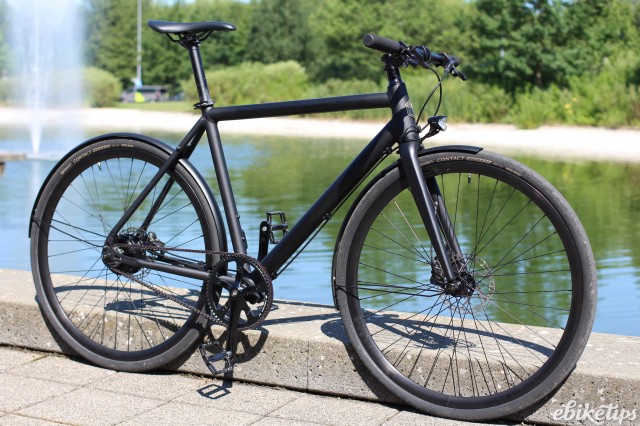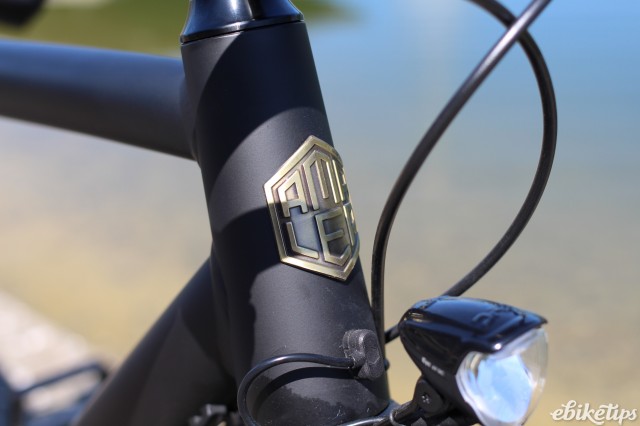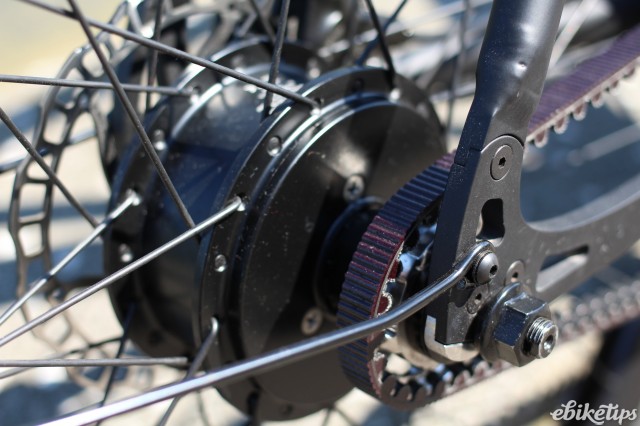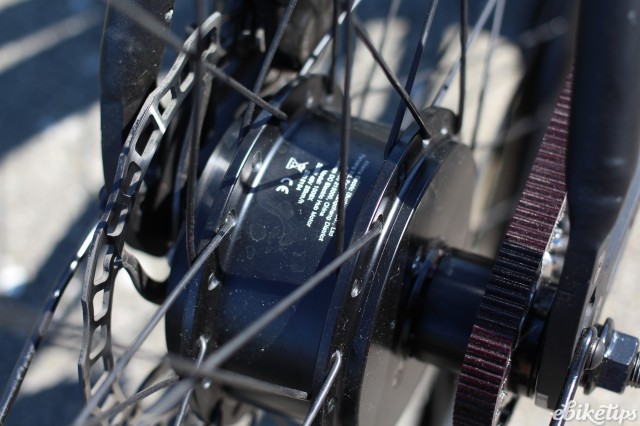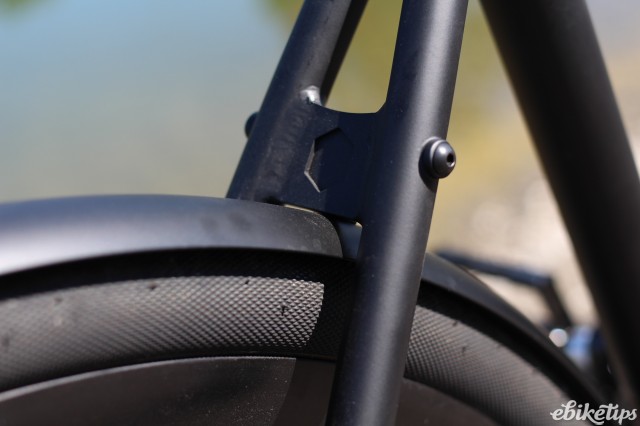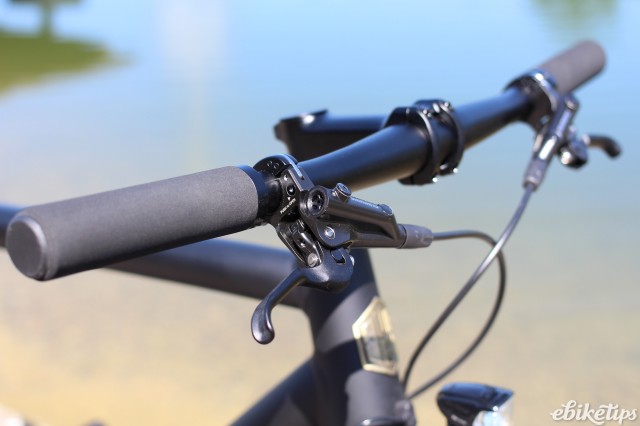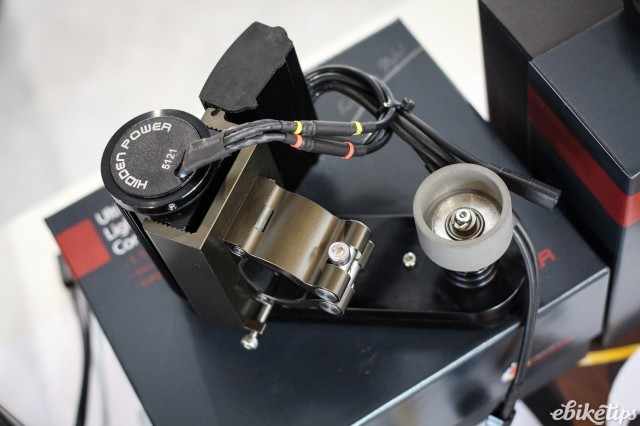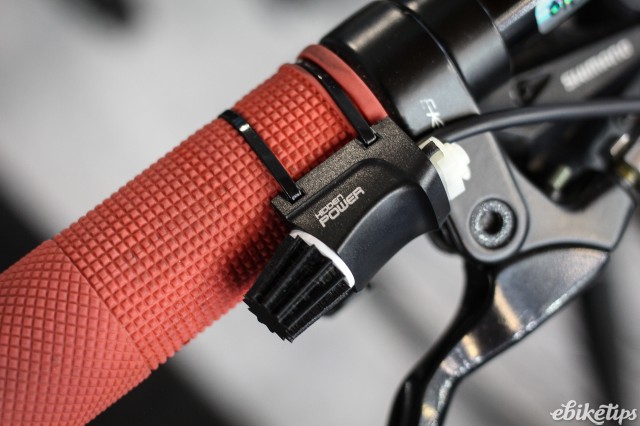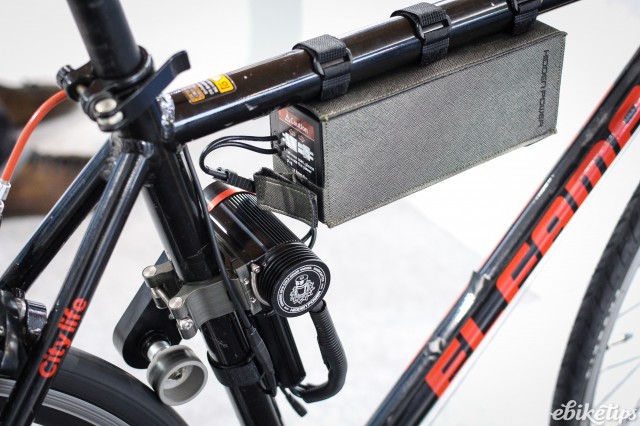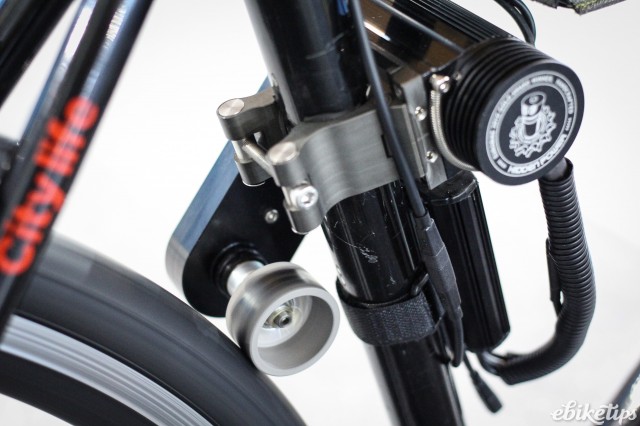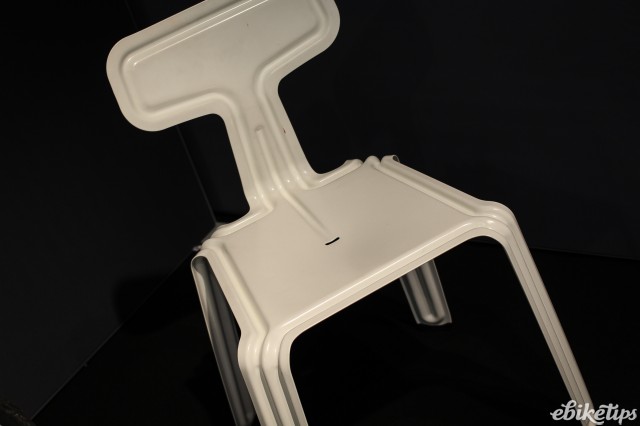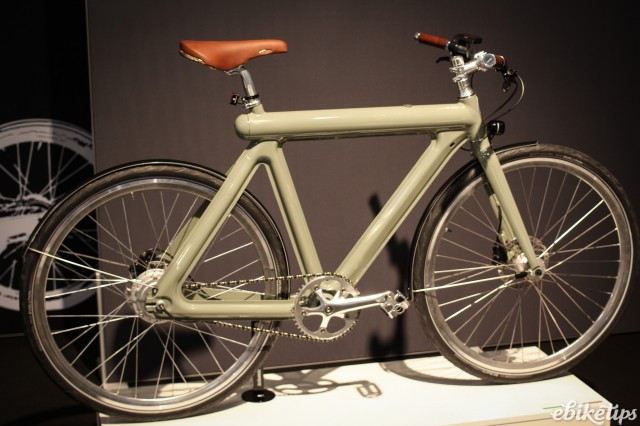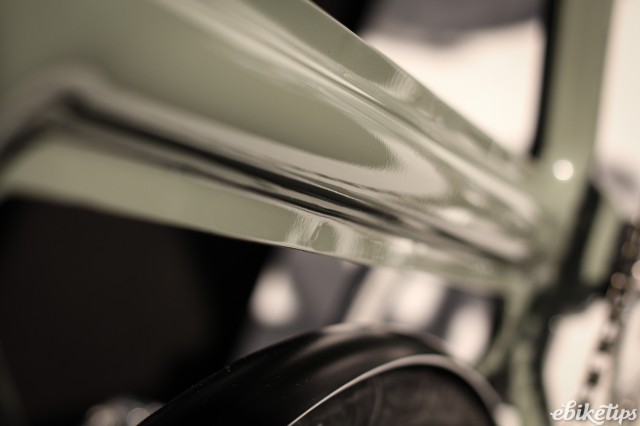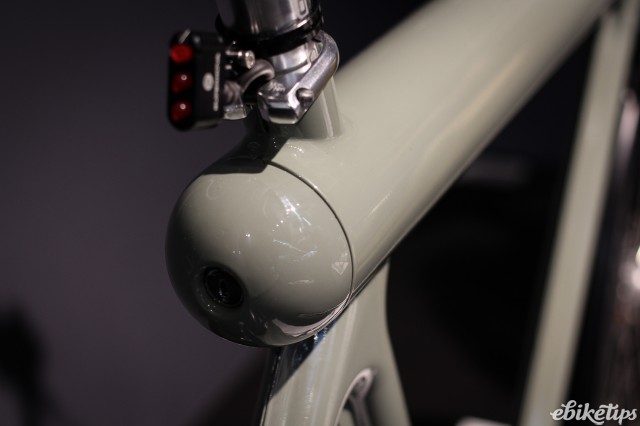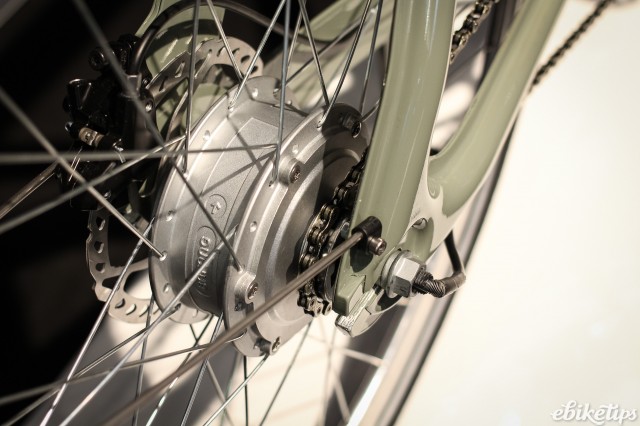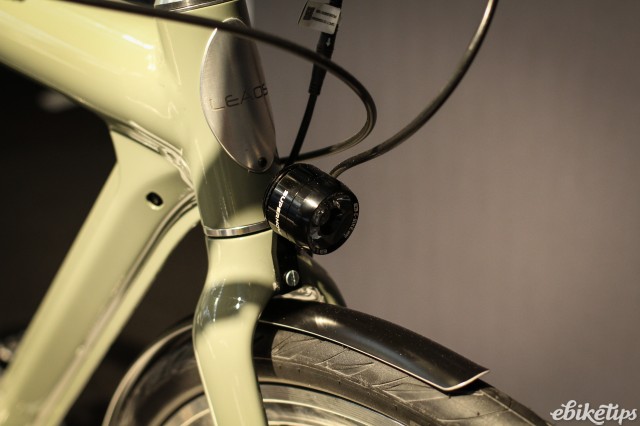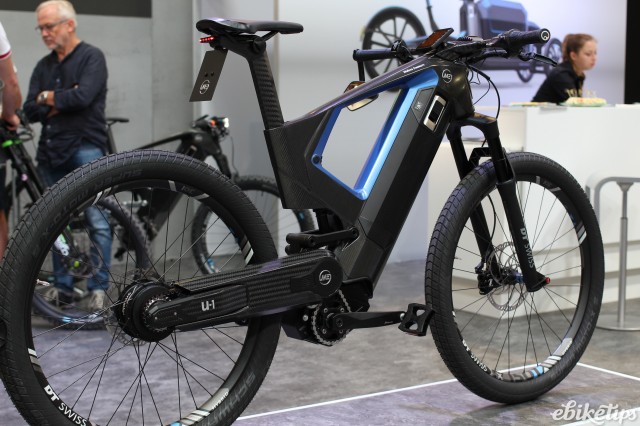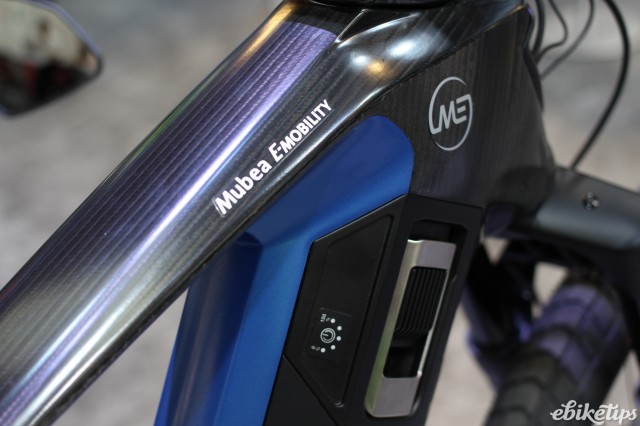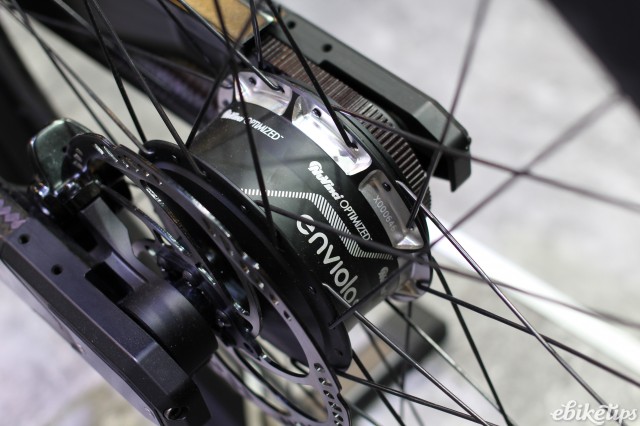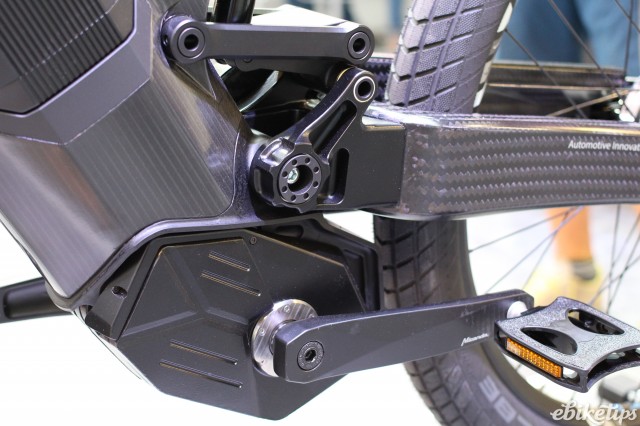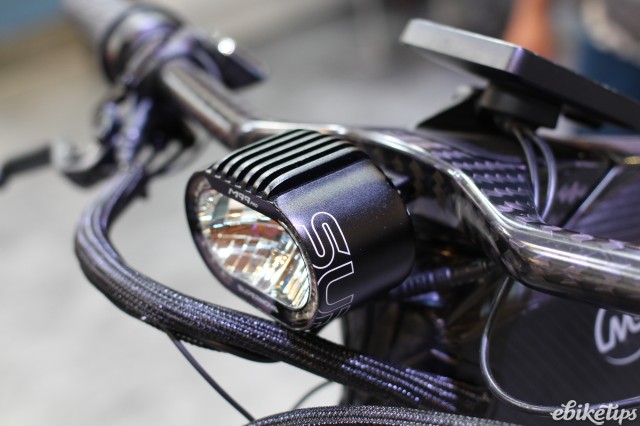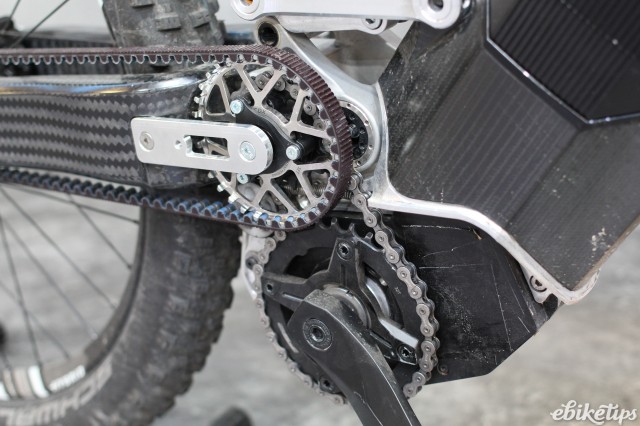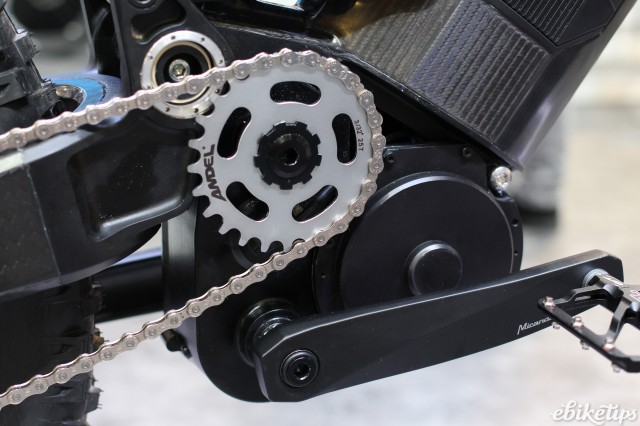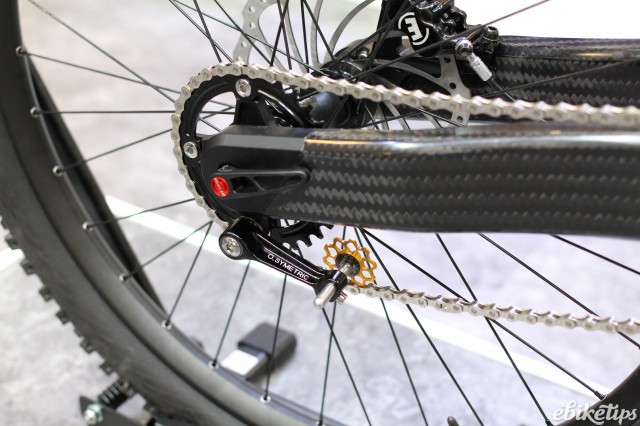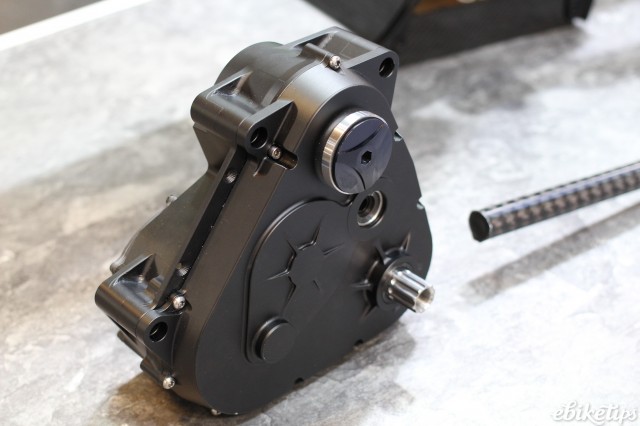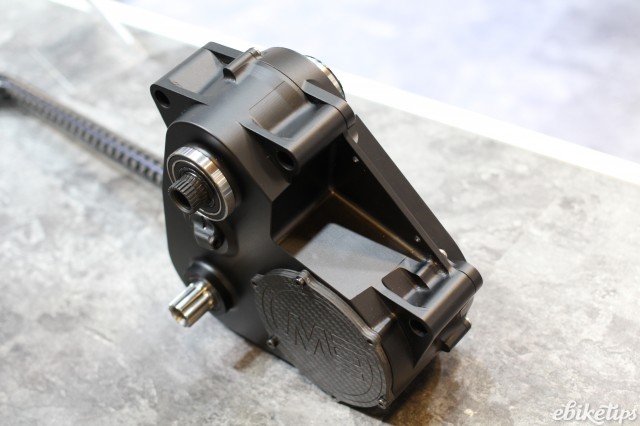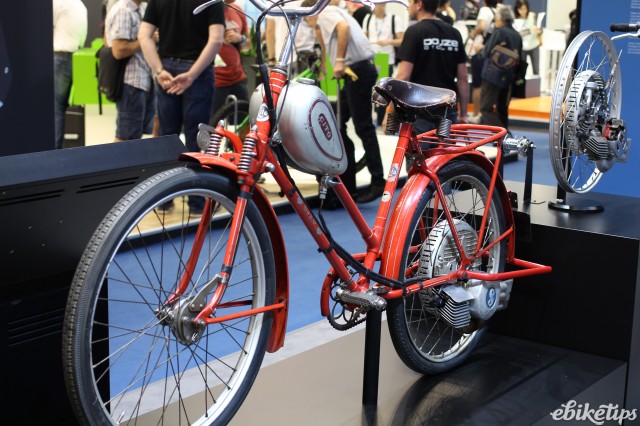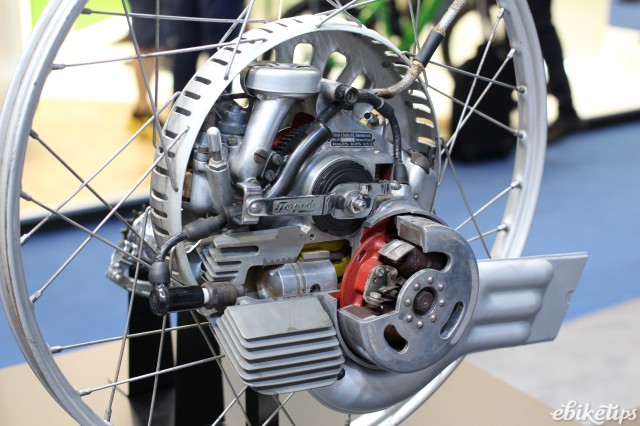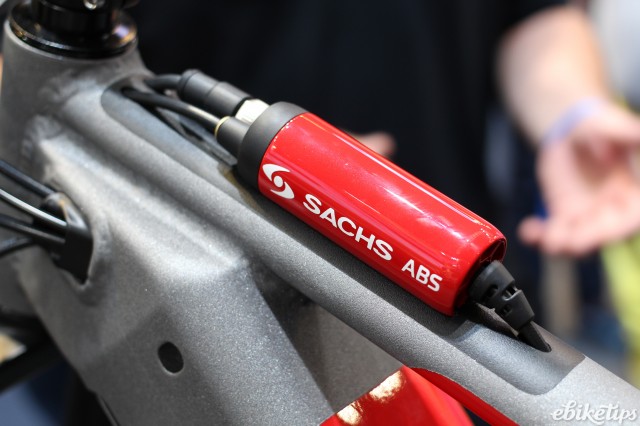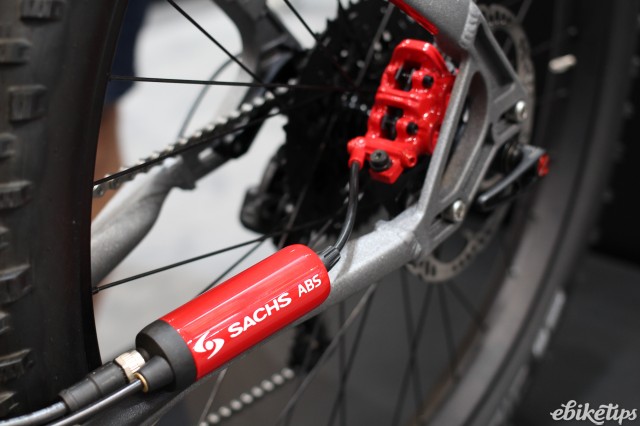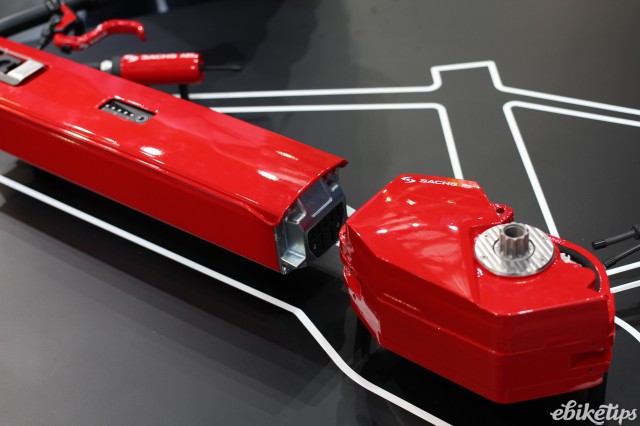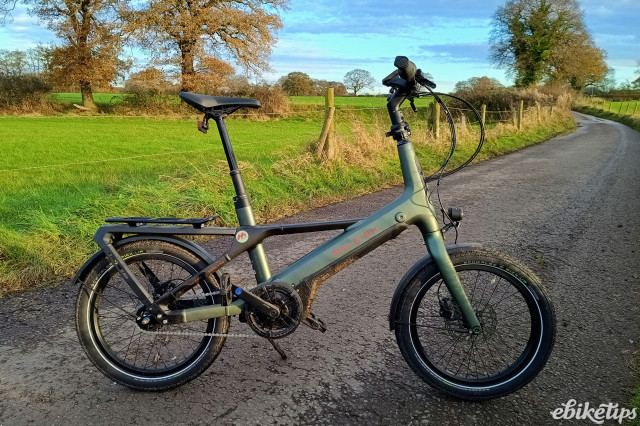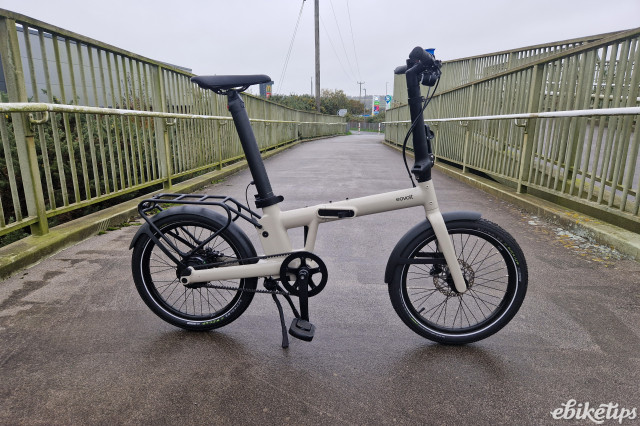Last week we were at the Eurobike show in Germany, and although it’s maybe not the show it once was for road and mountain biking – with a lot of the bigger brands now doing their own thing – there’s always loads to see from an e-bike point of view. Here are five cool things we saw at the show… there’s plenty more to come!
Ampler (main pic above) didn’t actually have a stand at the Eurobike show but it did bring some bikes along for us to have a look at. And very nice they look too. The watchword is integration; the Ampler bikes look, well, just like bikes really. There’s no obvious electric accoutrements at first glance, just a clean urban machine. Look a bit closer and you’ll see the hub motor and the charging port and power button on the seat tube, but that’s about it. There’s no display and the bike just has one mode: the harder you pedal, the more it assists you. Well, there’s two modes really: on and off.
The battery is hidden in the down tube and Ampler reckons it’s good for 70km of riding; we’ve only been round the car park so we can’t really say whether that’s accurate. The bike in the picture is the slightly more expensive model, with a more aggressive riding position and a carbon fork. That bike starts at €2,500 and you can spec it with a singlespeed or a 10-speed derailleur transmission. There’s a slightly cheaper model, too, with wider wheels, a more comfort-oriented geometry and an alloy fork. That bike starts at €2,290.
It’s a fun bike to ride, although we didn’t have enough time on board to form a very detailed opinion. Certainly the motor is eager and reasonably quiet, and the bike doesn’t really suffer for lack of modes, with the torque sensor doing a good job of applying power when it’s needed. We’re aiming to get a 10-speed version of the bike in for review soon.
Sachs is a brand name of automotive Giant ZF, which is based in Friedrichshafen where the Eurobike show takes place. It has been involved in mobility solutions for over 100 years, and was proudly displaying in-wheel petrol engines (above) from as long ago as the 1930s, as well as an e-bike from the very early 1990s.
The new developments branded as Sachs are a collaboration between ZF, Magura and Brake Force One. And the companies are developing a full e-bike system including motor, battery, brakes… and ABS.
Anti-lock brakes for e-bikes debuted at last year’s Eurobike show with the Bosch system. That’s moving into production now and we saw it on some bikes around the show. The Sachs system is some way behind that, but it’s very interesting. Like the Bosch system it’s a means of controlling braking in a hydraulic disc system, in this case Magura hydraulic brakes. The Sachs system is considerably more compact than the Bosch Unit, weighing just 300g, and can be used on either wheel, or both; the Bosch system is confined to the front wheel.
There’s also a brand new mid motor, that Sachs claims will put out 110Nm of torque at a cadence of 60rpm. That’s well up in the market-leading part of the curve, so it’ll be interesting to see what the motor is like in practice. The motor has a construction that’s specifically designed to channel heat away from the moving parts of the motor and into the motor body, and from there into the frame of the bike. Because of this, Sachs claims that it’s possible to run the motor at high power for longer, saying that up tp 700W of output for three minutes is achievable.
As of now, the motor still in development, so don’t expect to see it on any bikes soon; production is scheduled to begin some time at the end of the year. The ABS system is further down the line, with testing happening in 2019 ahead of a scheduled launch to the mass market in 2020.
Mubea is big in automotive circles. It might not be a name you recognise but Mubea claims that it has a part in half of all the cars in Europe. They make metal and carbon fibre parts, for everything from town runabouts to Formula 1. And now they’re turning their eye to e-bikes. Or, more general, urban mobility. There were nice renderings of cargo bikes and lightweight four-wheelers on the Mubea stand, but what was actually on the stand was bikes. Quite cool bikes.
Mubea’s urban mobility concept bikes are a bit like city-going full suspension mountain bikes. They’re not necessarily designed to be supremely practical – there’s no mudguards, for example – but rather to showcase what Mubea can do. And they’re some of the most strking e-bikes at the show.
One of the things that Mubea is working on is an integrated motor and gearbox. Mubea’s motor is an eight-speed system, with a range of 360-400%, and designed specifically for shifting under load. The gearbox is rated at up to 250Nm so Mubea sees it as an option not just for e-bikes but also light electric vehicles with motors of up to 4kw. The company is already in talks with several bike manufacturers to adopt the new motor, and is looking to start production in 2019.
Yes, it’s a picture of a chair, and not a bike. You might be wondering why: it’s because the chair and its production process gave the designer, Harry Thaler, the idea to produce a bike in the same way. And that’s what Leaos has done.
The bike is produced from pressed steel sections, which are spot-welded together to create the frame. The resulting construction has the same stiffness as a traditional tubed bike. So why do it this way? Well, it looks pretty cool. And also it makes it easy to accommodate the 360Wh battery in the top tube.
The bike is still in development, with Leaos sticking with a singlespeed version for now and moving on to gears later this year. The bike will cost in the region of €2,900.
We’ve seen a few systems like Hidden Power over the years: it’s a simple-to-fit e-bike conversion kit that can be added to pretty much any bike and drives the bike via a friction roller on the rear wheel. Hidden Power’s system uses an alloy roller with a tungsten coating for good grip against the tyre, and the motor is capable of delivering 40Nm of torque. The retail price is €850.
The system is controlled by a tiny remote on the bars. You can run the motor either in throttle mode (illegal in the UK, kids!) or in pedelec mode; if you’re doing the latter then you need to add a cadence sensor to the bottom bracket. The remote allows you to change the throttle speed, or the amount of assistance in pedelec mode, without taking your hands off the bars.
Hidden Power is offering two battery options, a frame-mounted bag as show above or a bottle battery. Capacities are 200Wh and 250Wh respectively, so you’re not going to be doing any epic rides with this system, but it’s more designed for short hops and a bit of a helping hand. The drive wheel disengages when you brake, or when you’re not using the motor.
Stay tuned for more from Eurobike soon!
